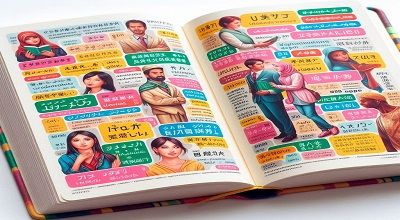Multi-Language Dictionary
Creating a multi-language dictionary for learning languages involves compiling a database of words and their translations in various languages. Here’s a simplified outline of the steps you might take to create such a dictionary:
1. Define Scope and Languages:
- Identify the languages you want to include in your dictionary.
- Determine the scope of the dictionary (e.g., common words, phrases, technical terms).
2. Choose a Data Source:
- Use existing open-source dictionaries, language corpora, or APIs to gather word translations.
- Consider reputable language resources and databases.
3. Database Structure:
- Design a database to store words and their translations.
- Include fields for word, language, part of speech, and any additional relevant information.
4. Data Collection:
- Extract words and translations from your chosen data source.
- Ensure the accuracy and relevance of translations.
5. Build or Choose a Platform:
- Develop a user-friendly platform for accessing the dictionary.
- Options include web applications, mobile apps, or desktop software.
6. User Interface:
- Design an intuitive user interface that allows users to easily search for words and view translations.
- Include features like pronunciation guides, example sentences, and audio clips.
7. Incorporate Language Learning Features:
- Integrate language learning tools, such as flashcards, quizzes, and pronunciation exercises.
- Provide users with the option to track their learning progress.
8. Collaborate with Language Experts:
- Work with language experts to ensure the accuracy and cultural relevance of translations.
- Consider incorporating regional variations and colloquial expressions.
9. Implement Cross-Language Search:
- Enable users to search for a word in any language and retrieve its translations in other languages.
10. Regular Updates:
- Regularly update the dictionary to include new words and reflect changes in language usage.
11. Include Pronunciation Guides:
- Provide audio pronunciation guides for each word to help users with correct pronunciation.
12. Consider Offline Functionality:
- Include an option for users to download language packs for offline use.
13. Beta Testing:
- Conduct beta testing with language learners to gather feedback on usability and functionality.
14. Legal Considerations:
- Ensure compliance with copyright and licensing agreements when using data from external sources.
15. Launch and Promote:
Launch the multi-language dictionary and promote it through language learning communities, social media, and other channels.
Final Words
Remember that building a comprehensive multi-language dictionary is a substantial undertaking, and ongoing maintenance is crucial for keeping the content relevant and accurate.
